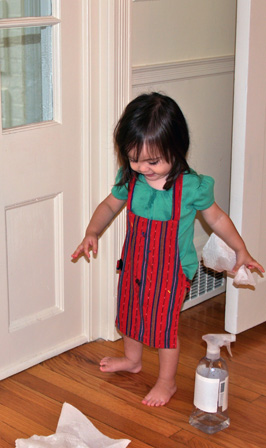Responding to the Cause of the Behaviour
Create an environment where you can respond to the cause of your child's behaviour
- It seems rather obvious to say but a good approach is to evaluate the cause of the tantrum or reaction and respond to that. This will require you to train yourself to observe your child and to note what kind of things set off a tantrum or cause her to become tearful and unhappy.
Connect your child to the solution to resolve the bad behaviour
- Having thought about what is causing the behaviour you are now in a position to respond. Is your child hungry or tired? Then she needs food or sleep. Is she over-excited? Then she needs calm. Is she feeling left out or neglected? Then she needs your focussed attention, not half of you while you look at your computer screen. Is she frustrated? Then she needs help with what she is doing.
- If she is having trouble accepting a disappointment then she needs you to remain calm and in control. When you give in to her because she is screaming for something you make it harder for her to accept other limits. This is also not a time for threats, particularly those that you know you won't actually carry through. 'If you don't stop screaming we won't go to the park now or next week either.' Wait patiently for her to calm down and move on. Don't keep referring back to her bad behaviour when it is over.
Make Time
- Always make time to think about what is causing your child's behaviour before responding. Sometimes a moment reflecting can help us to calm down and not over-react and can bring the solution that restores calm.
